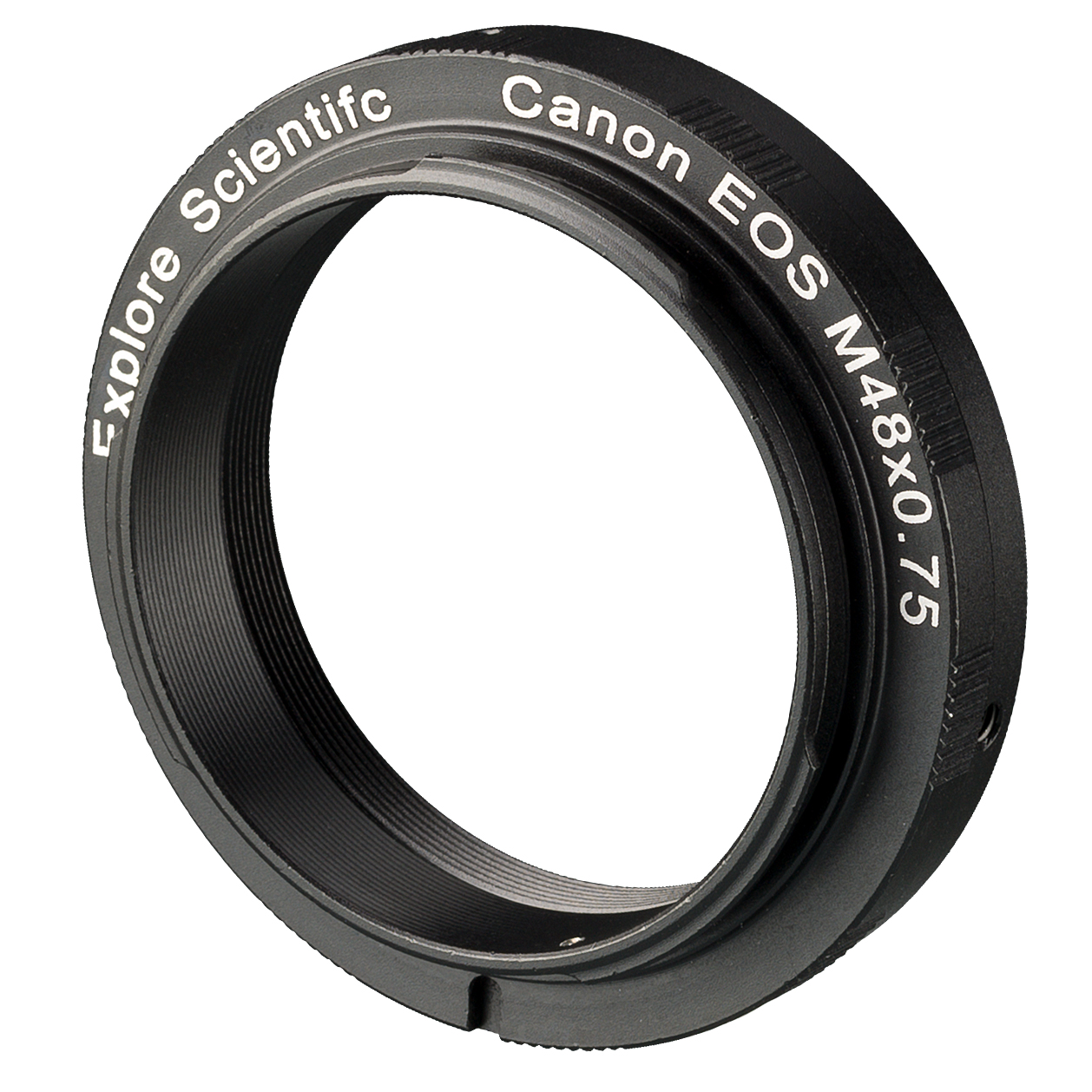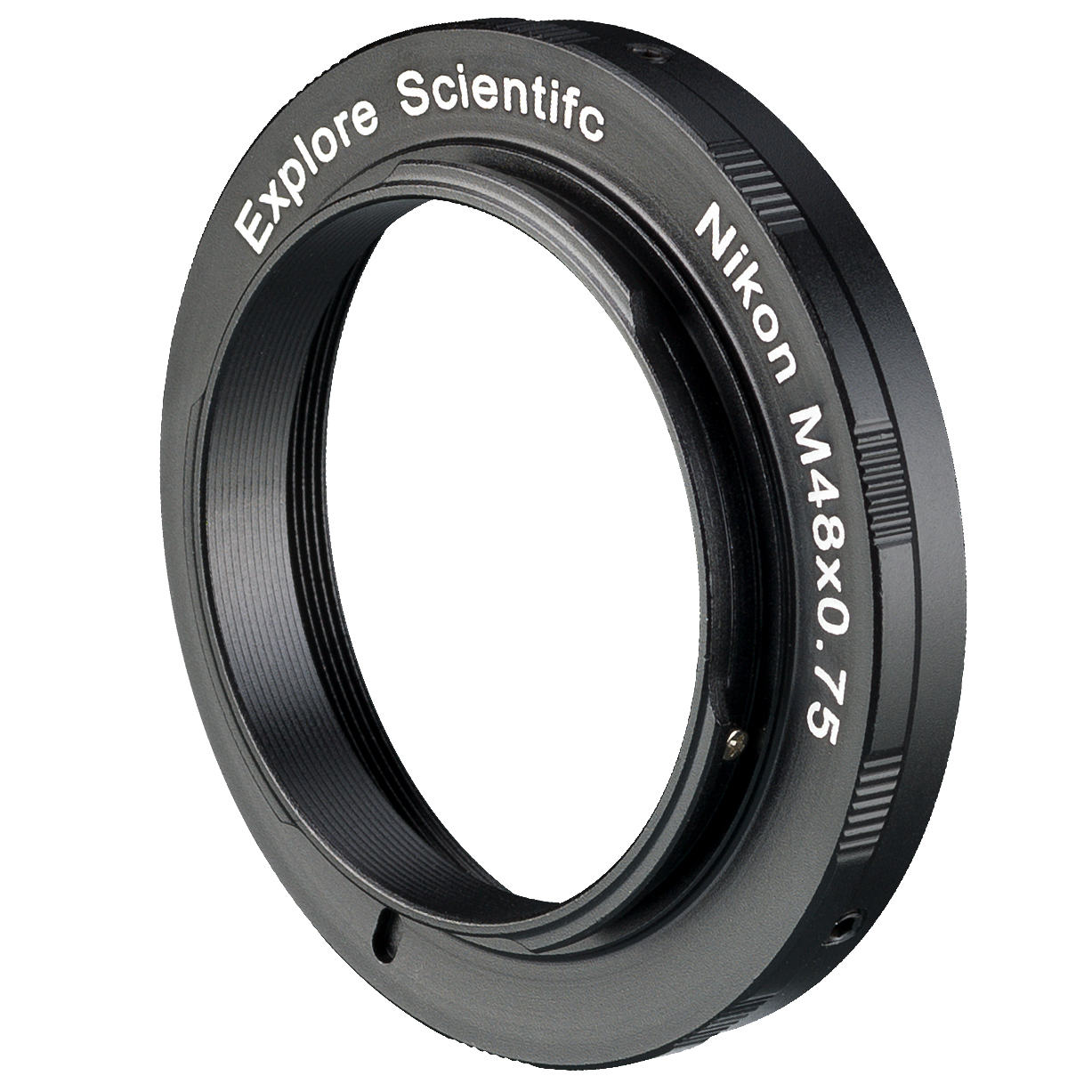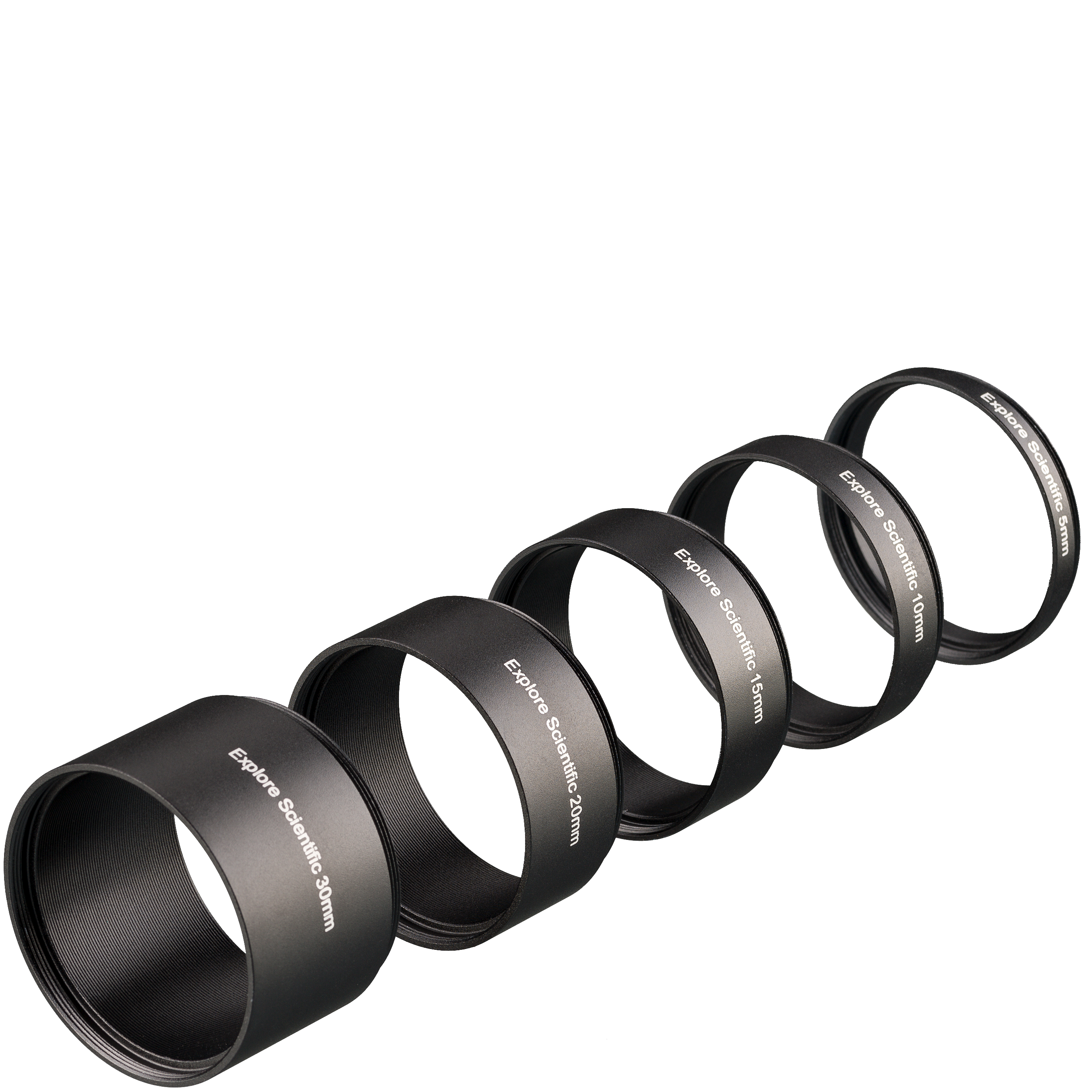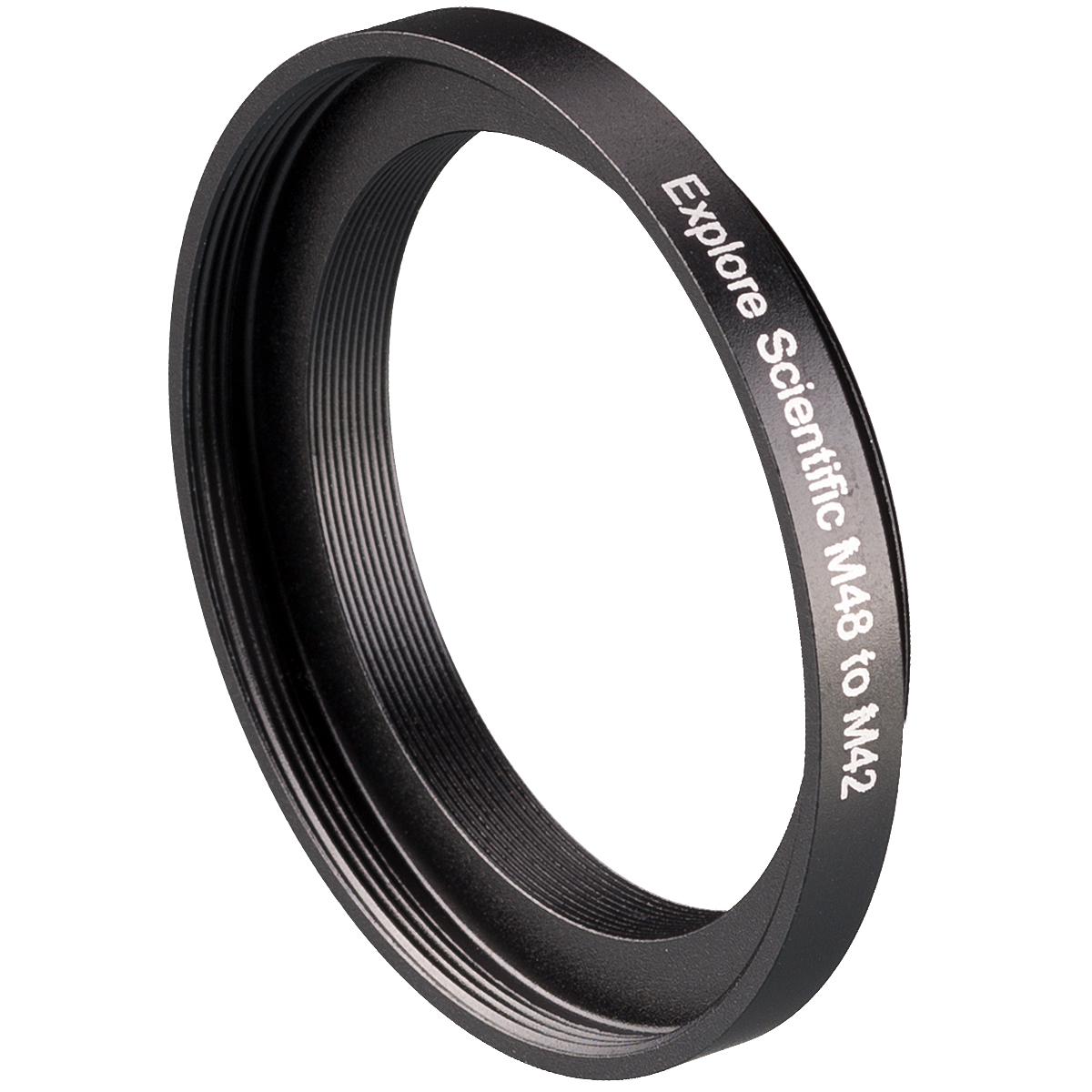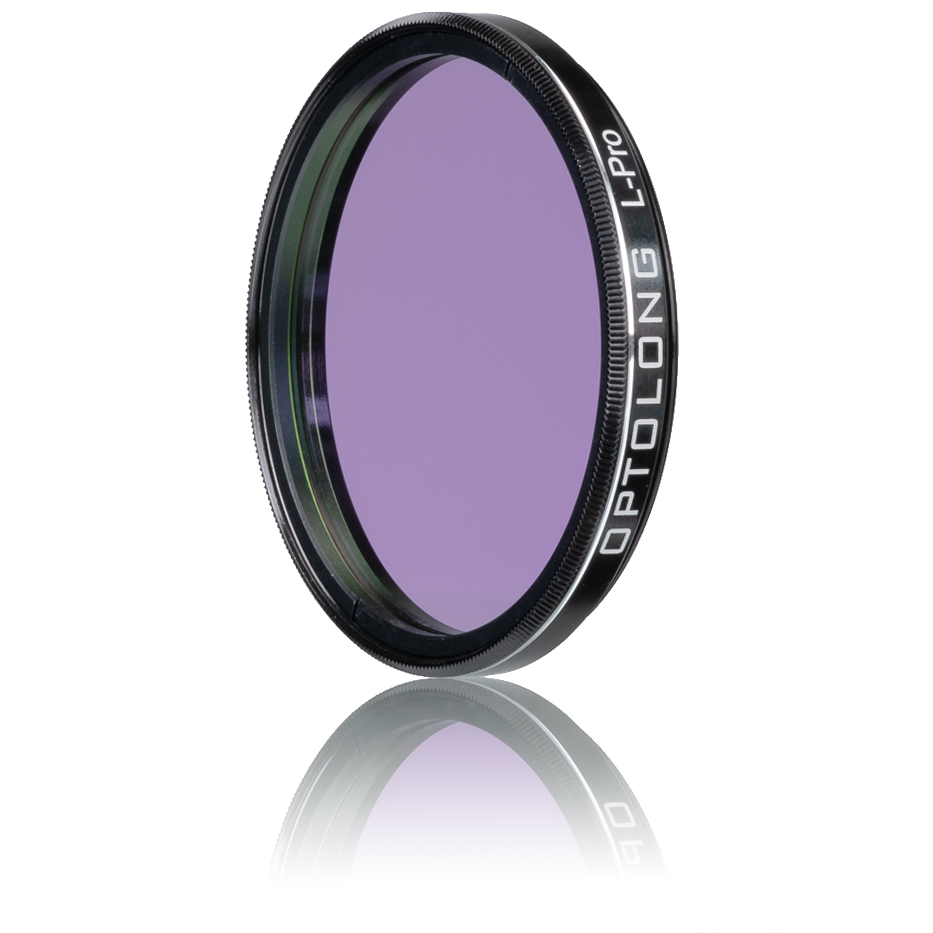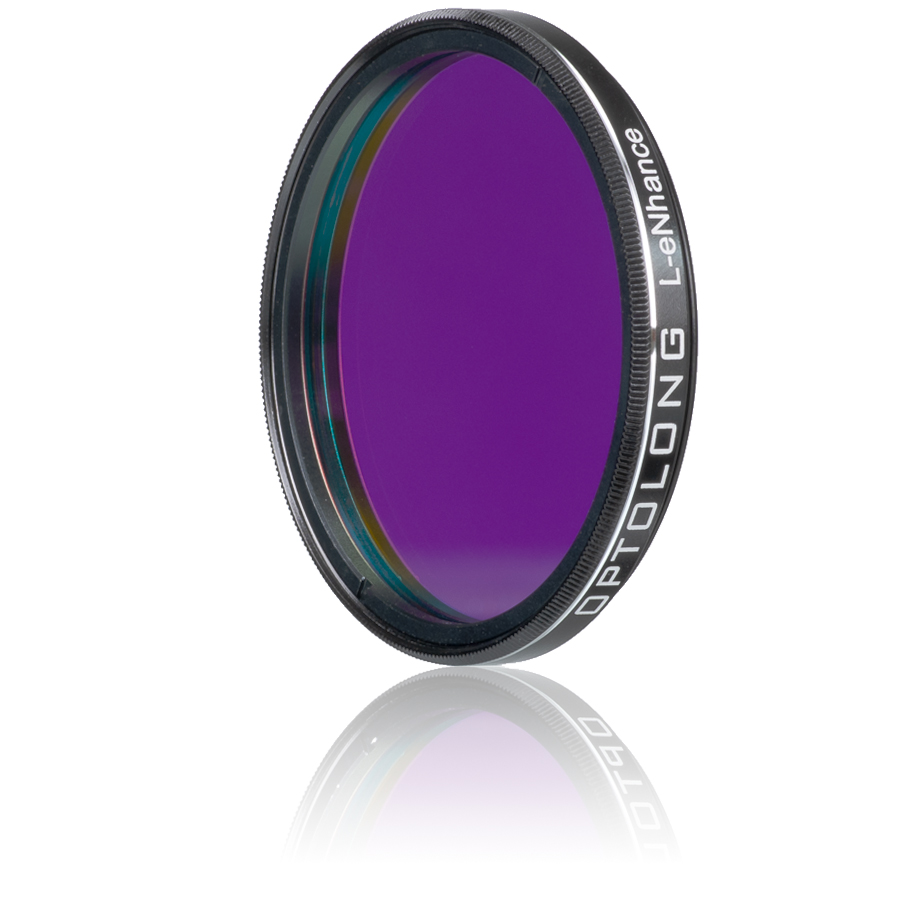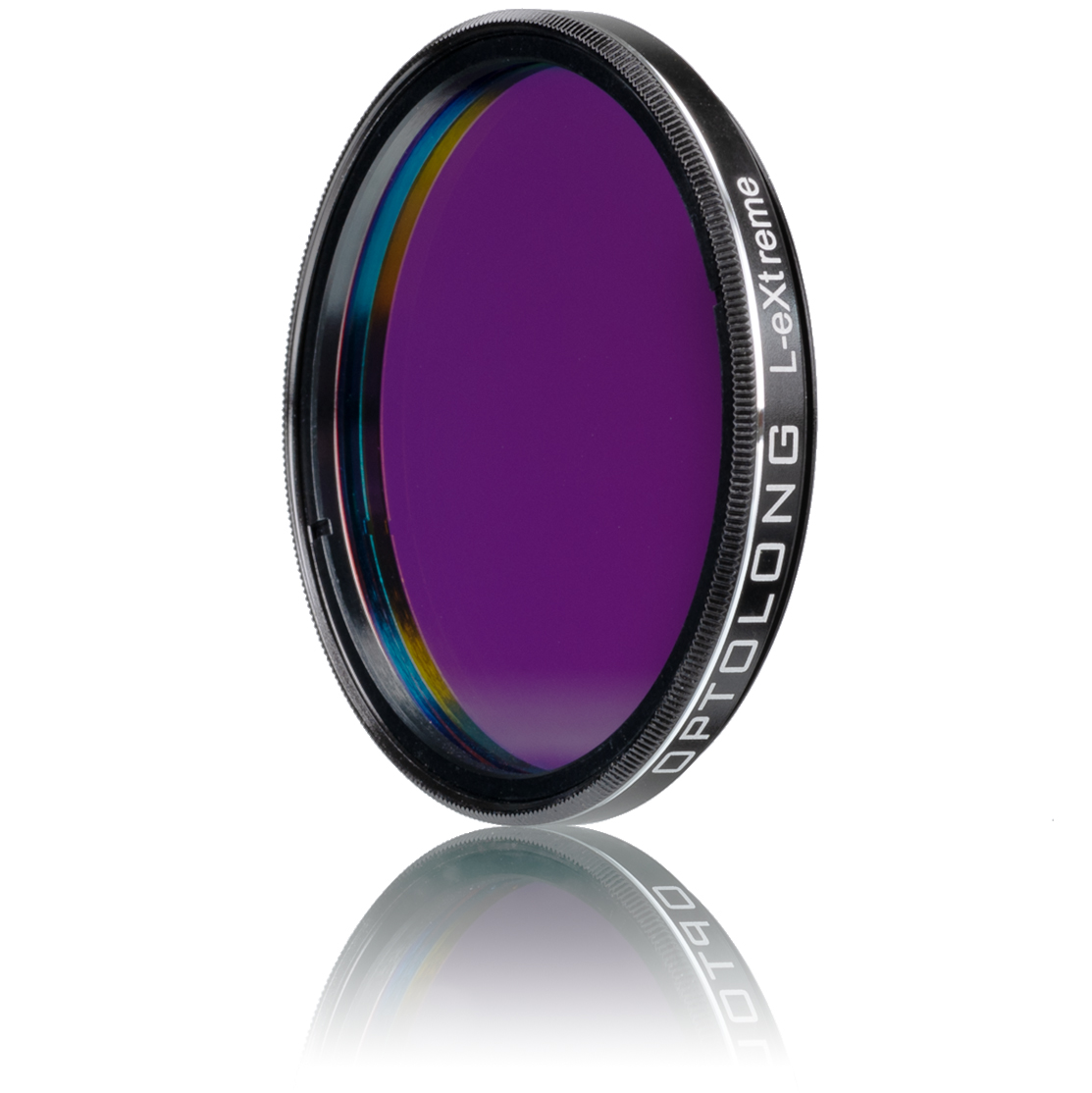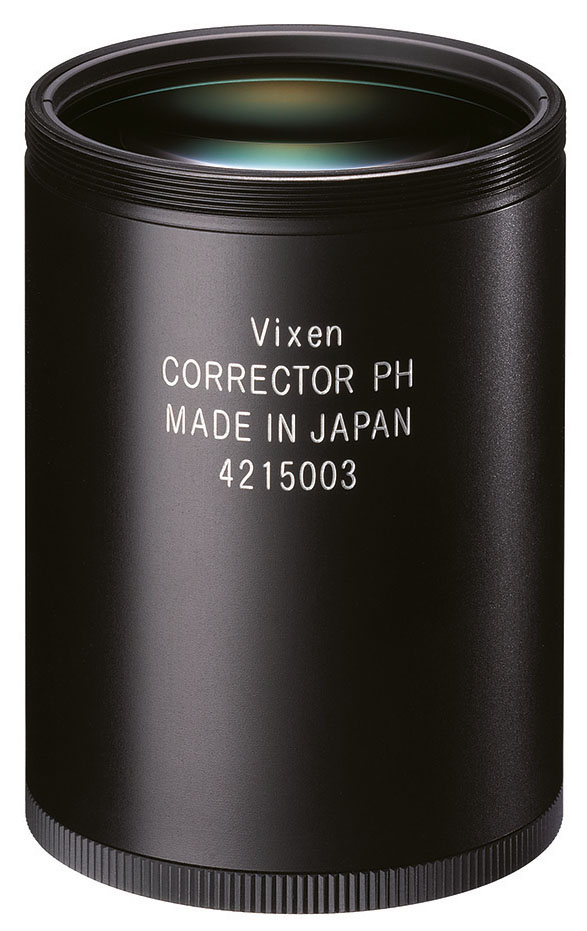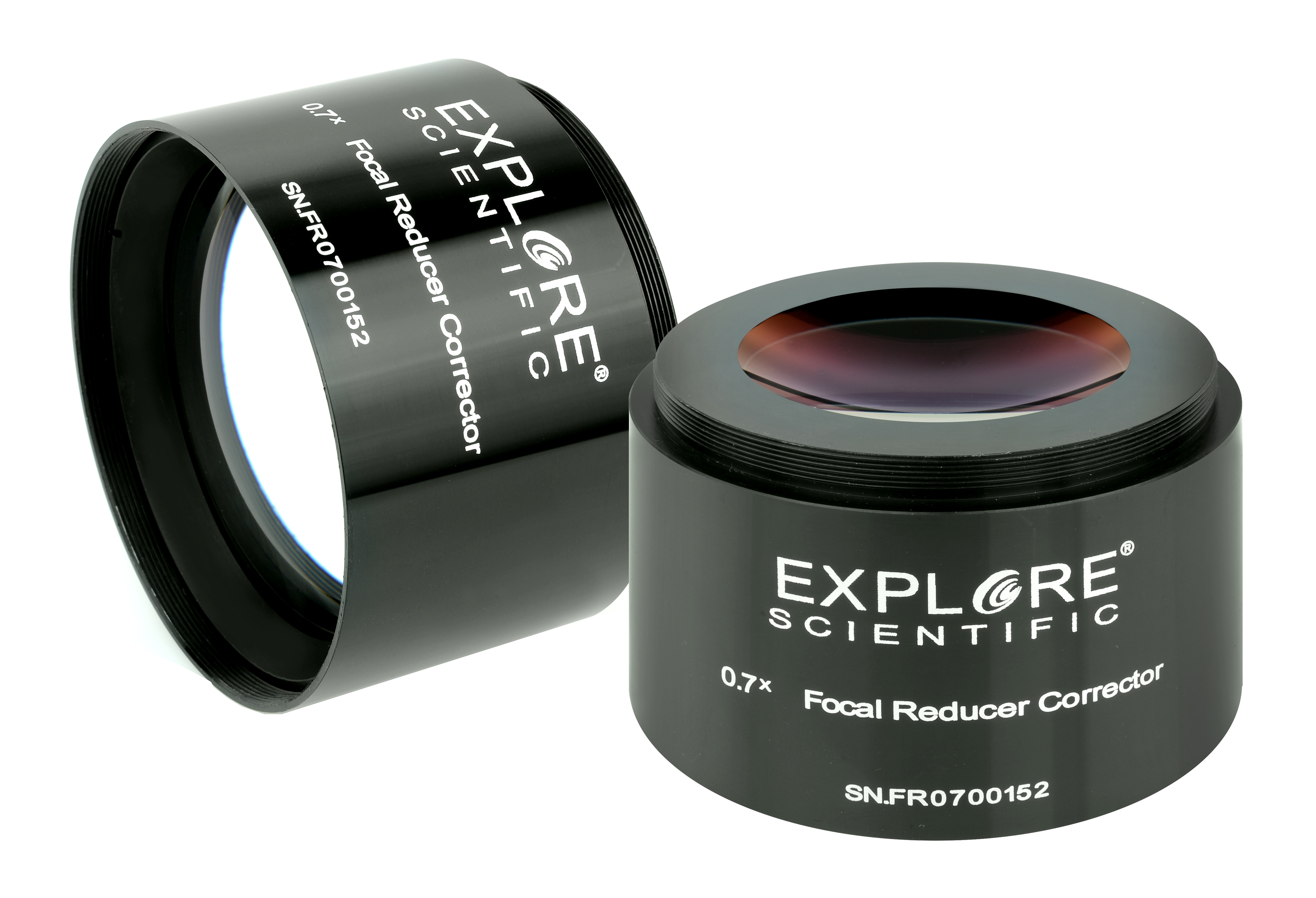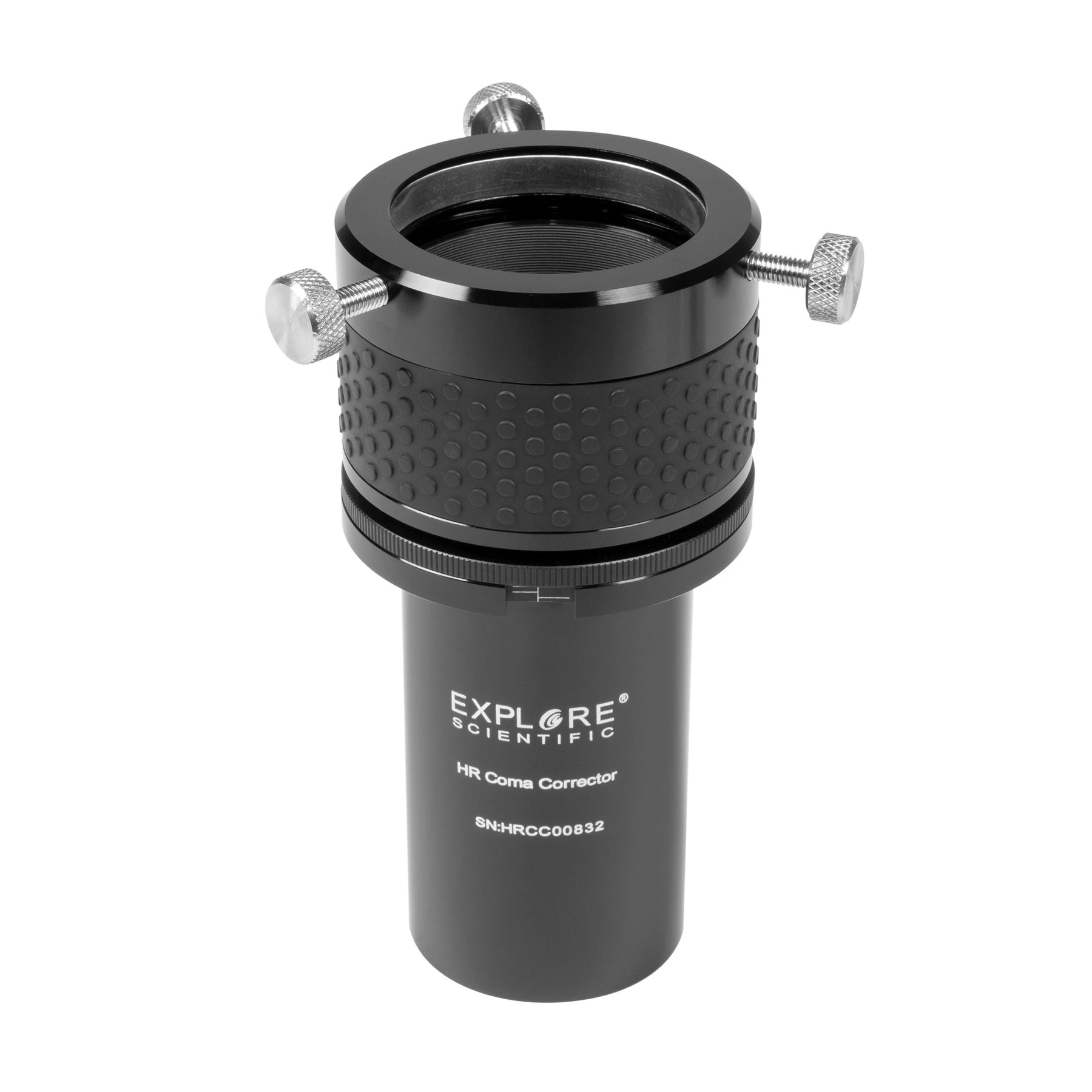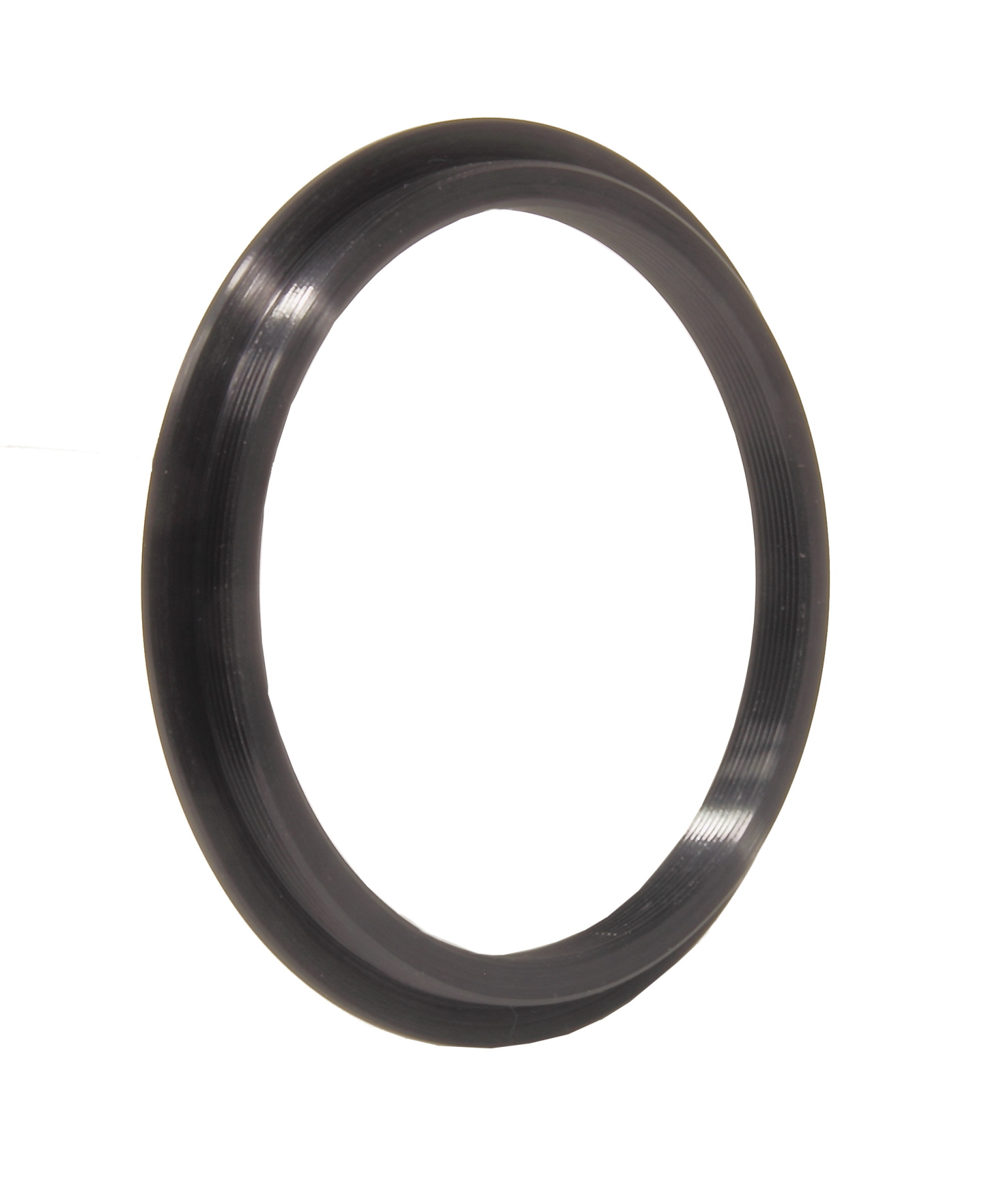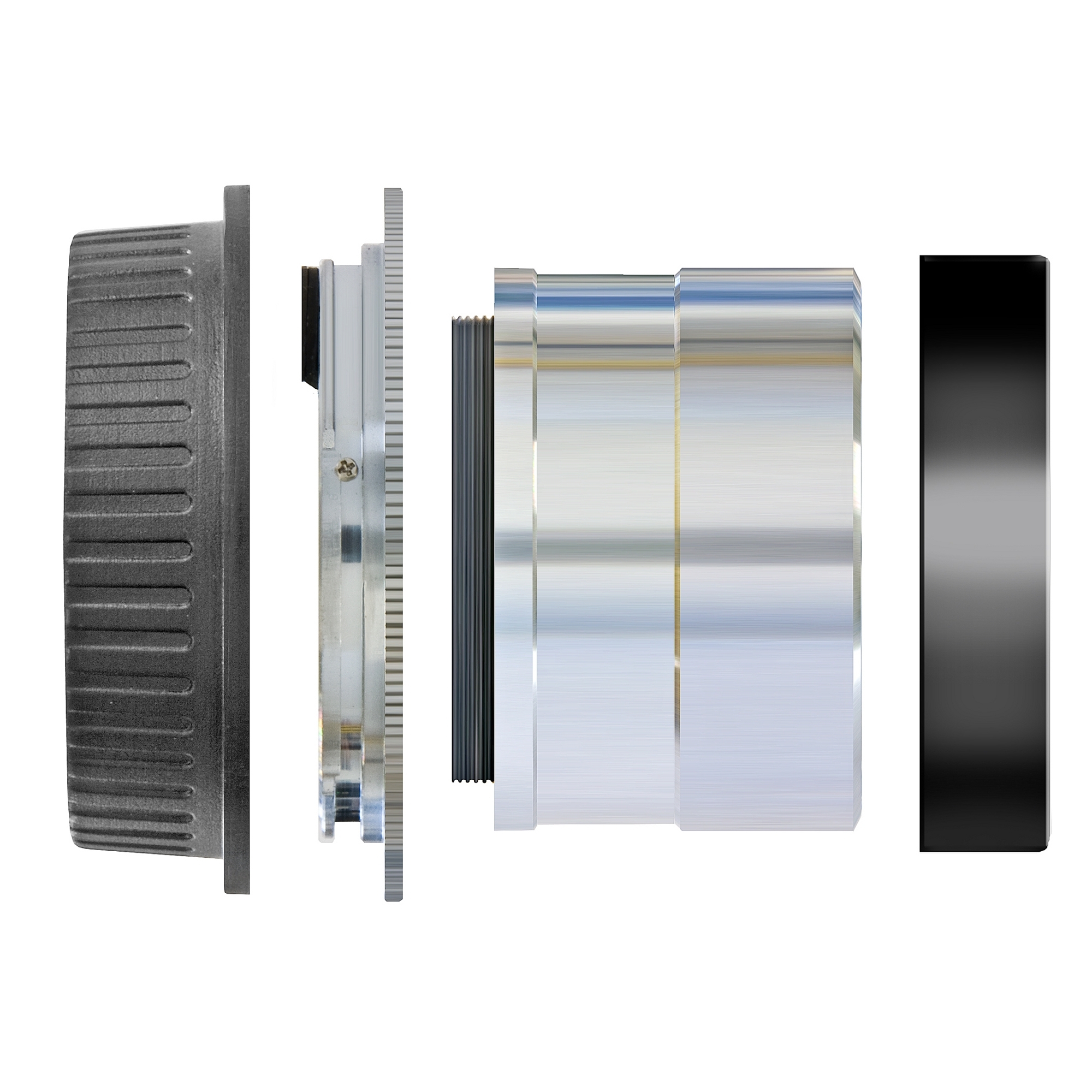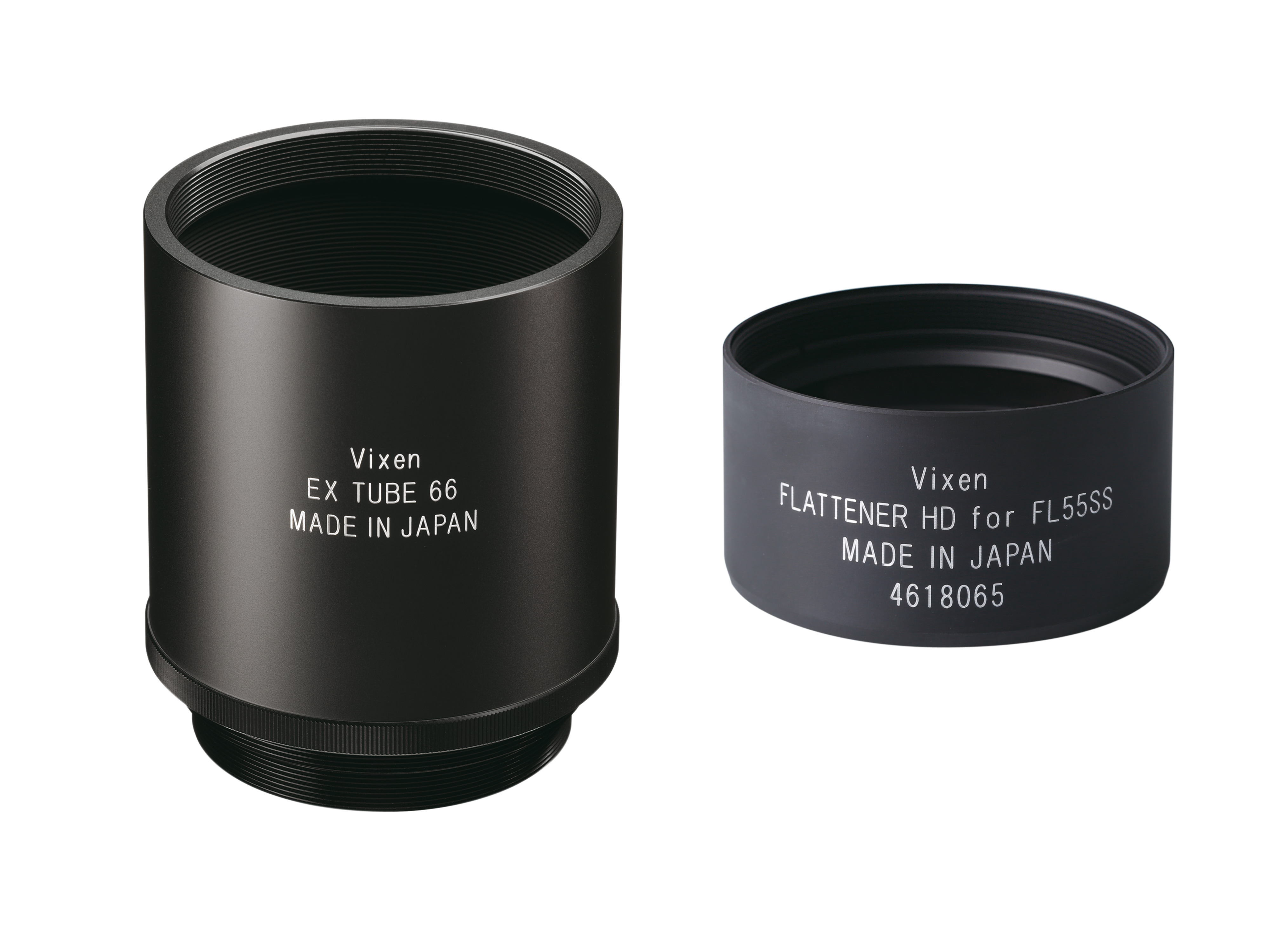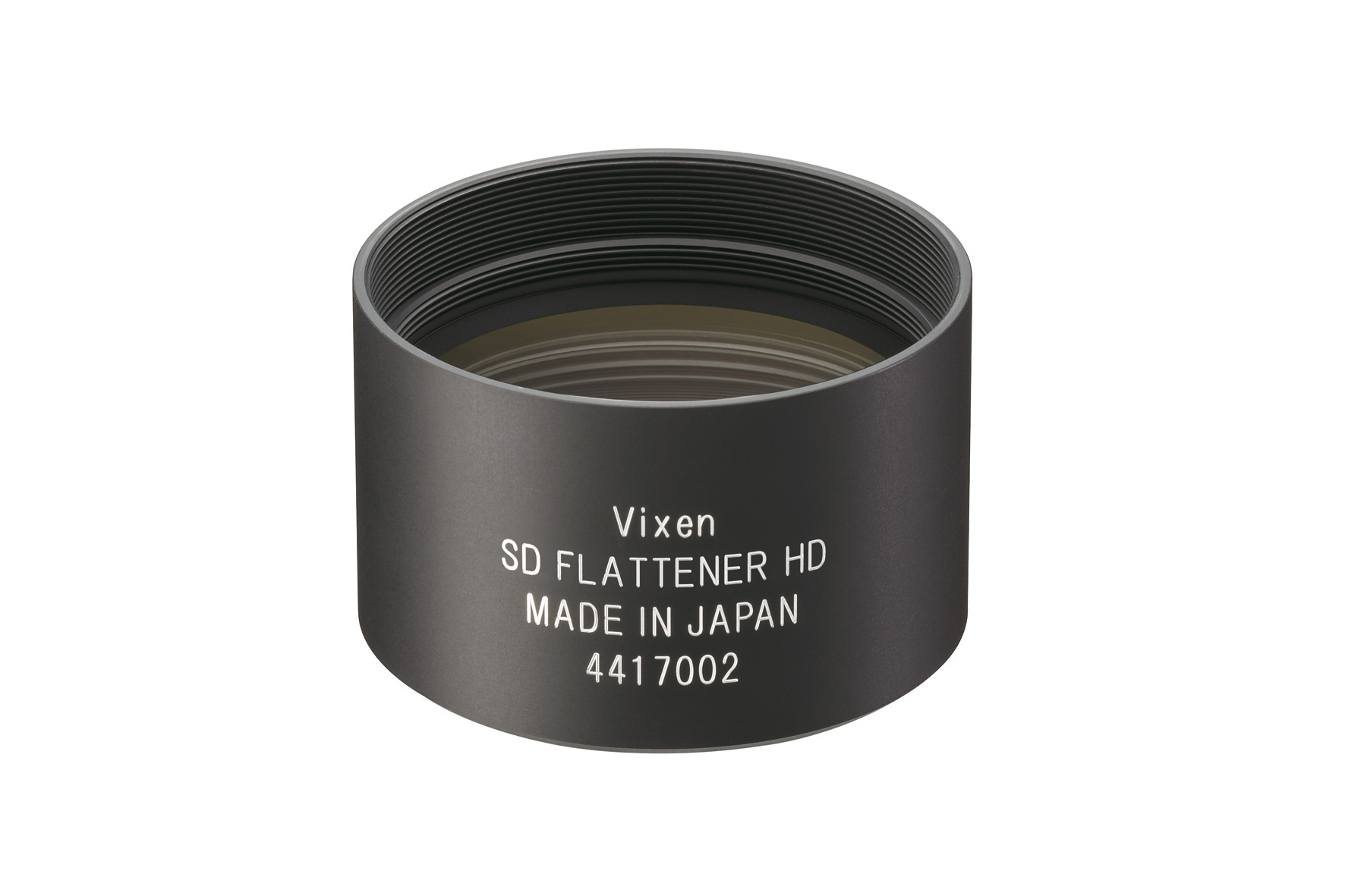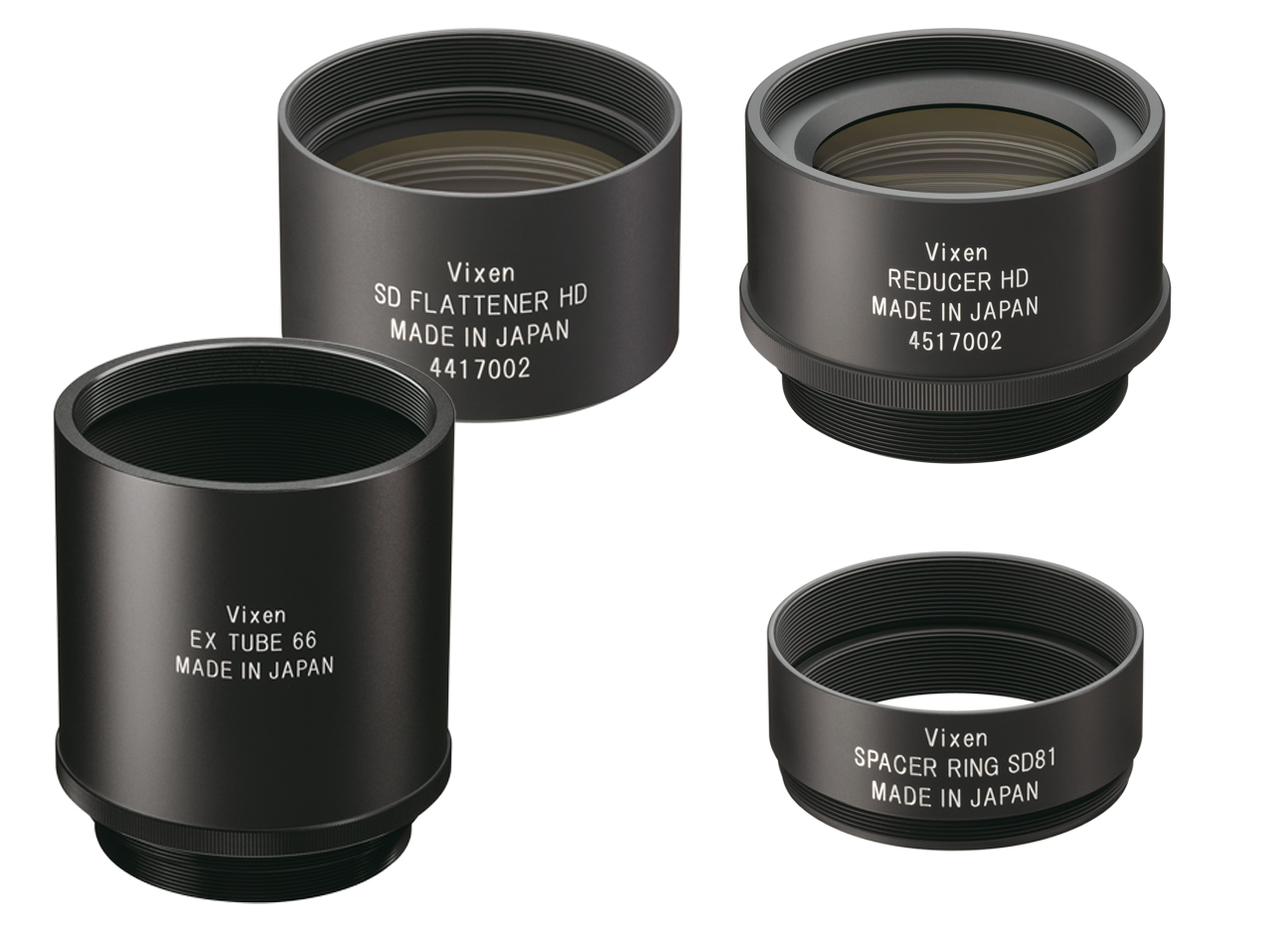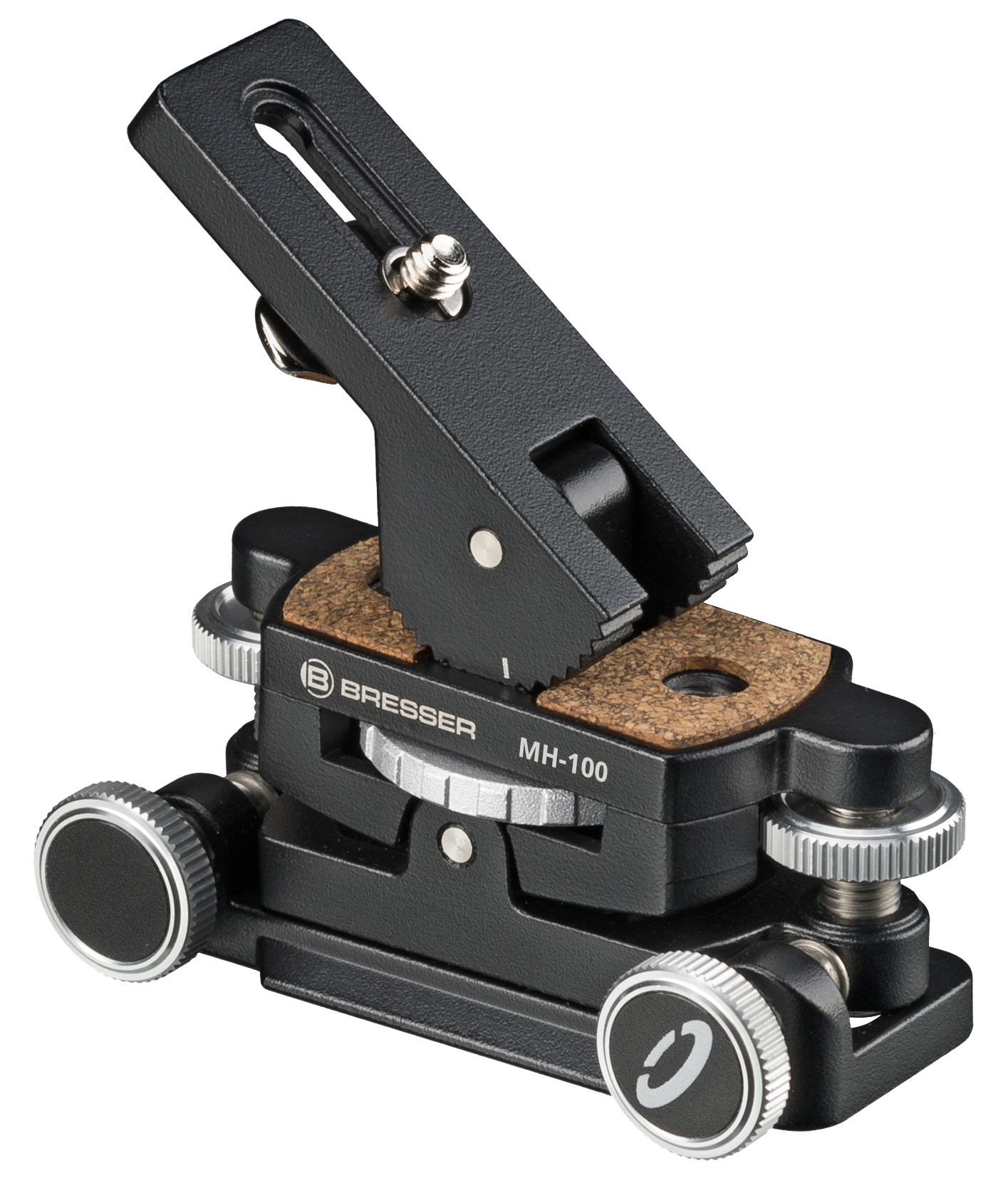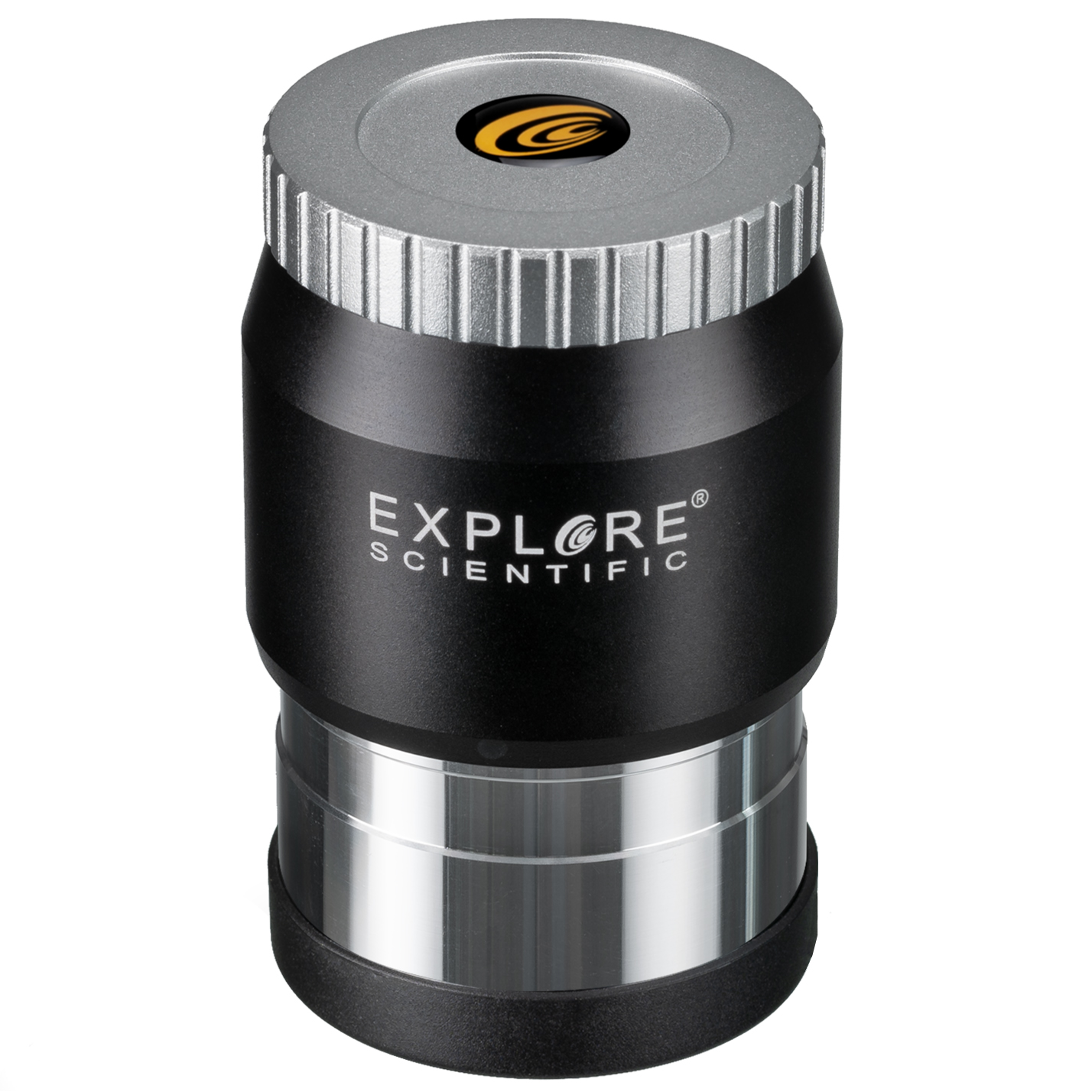
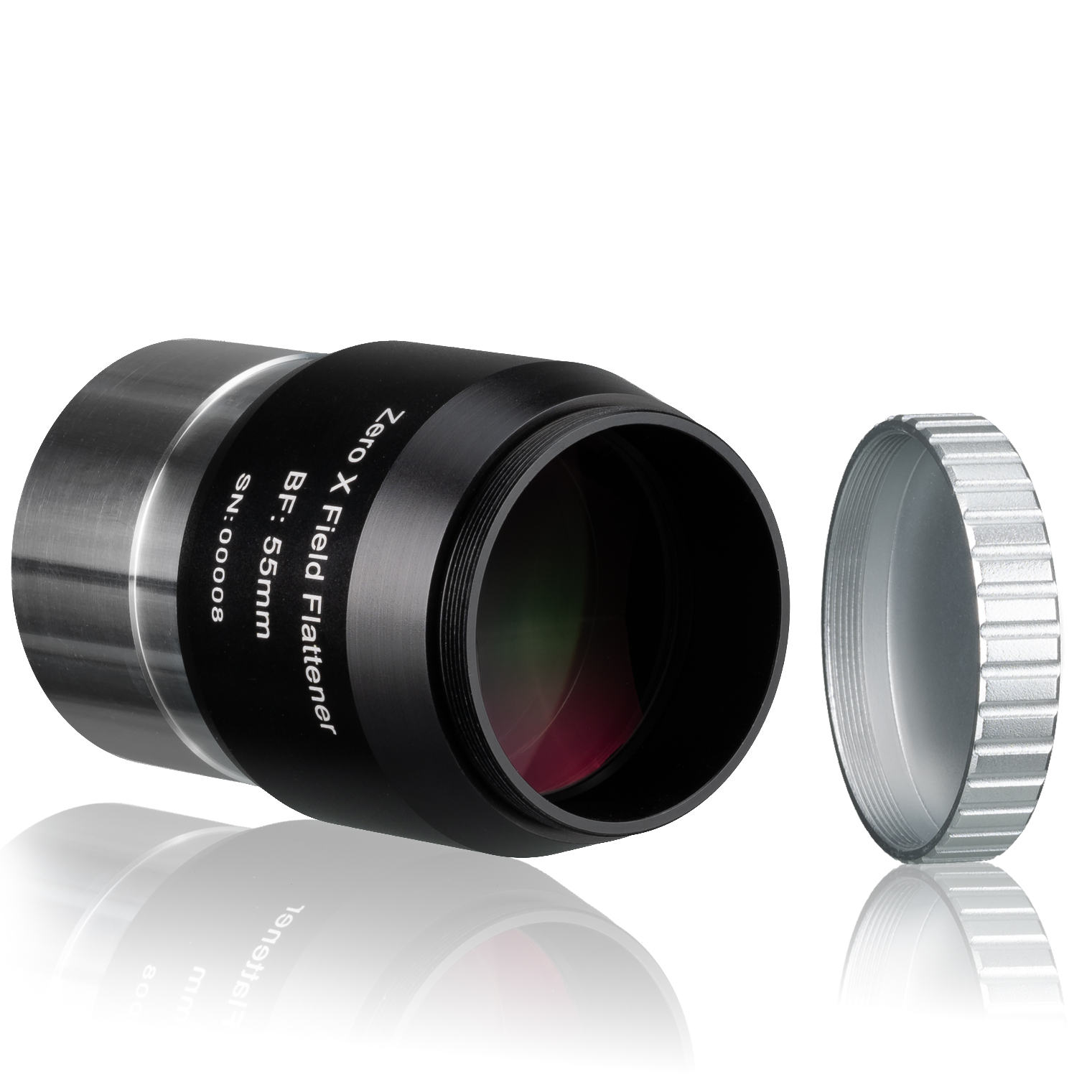
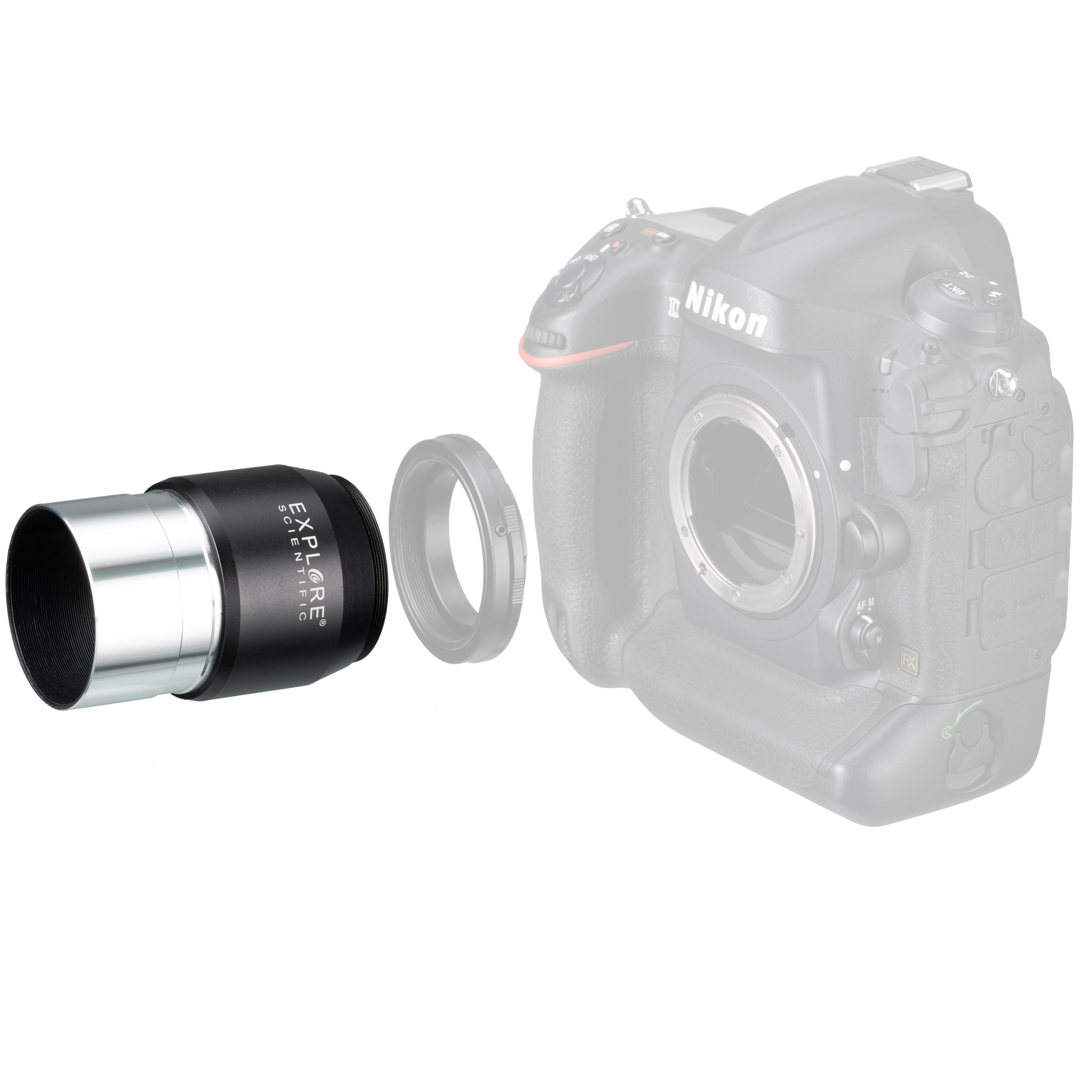
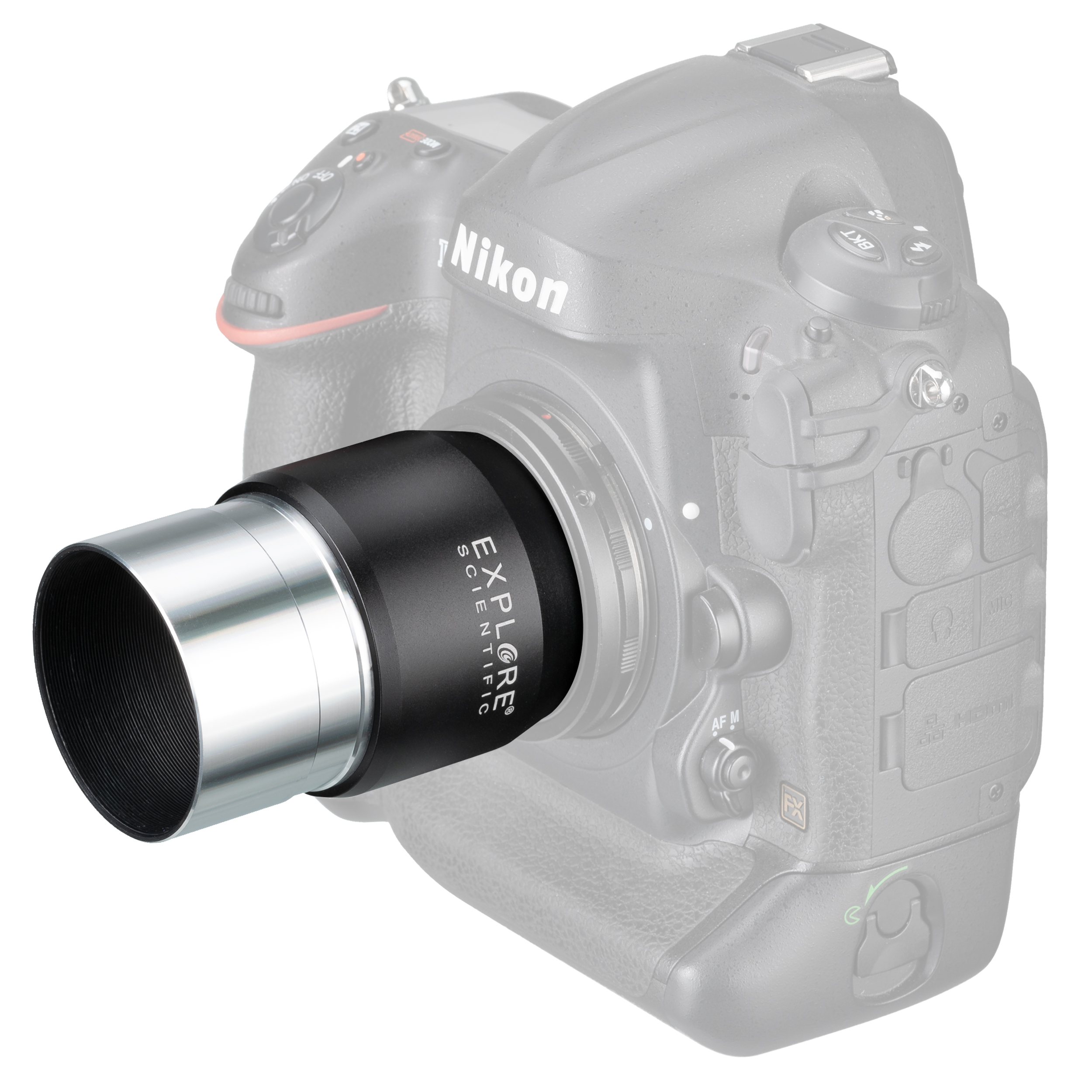
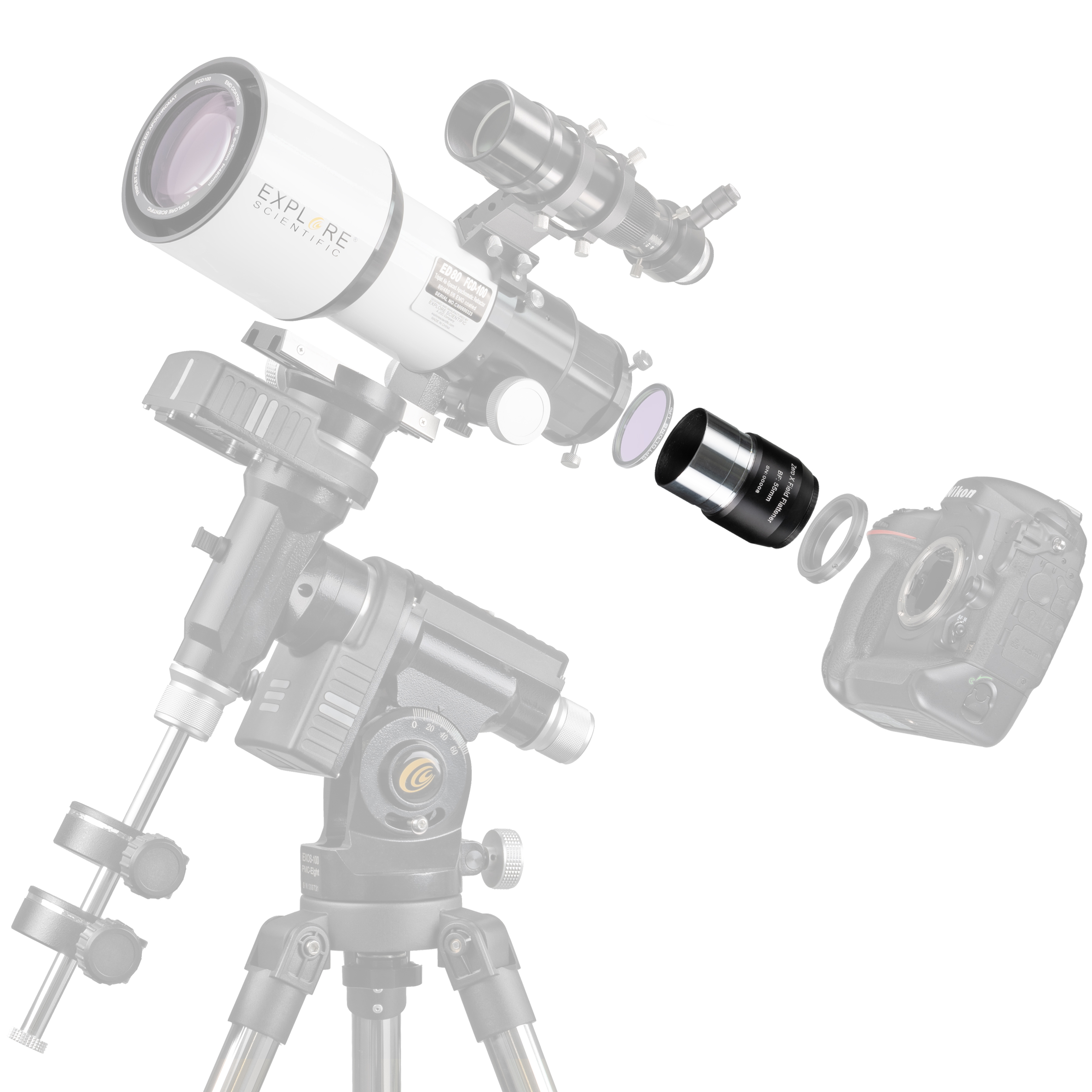
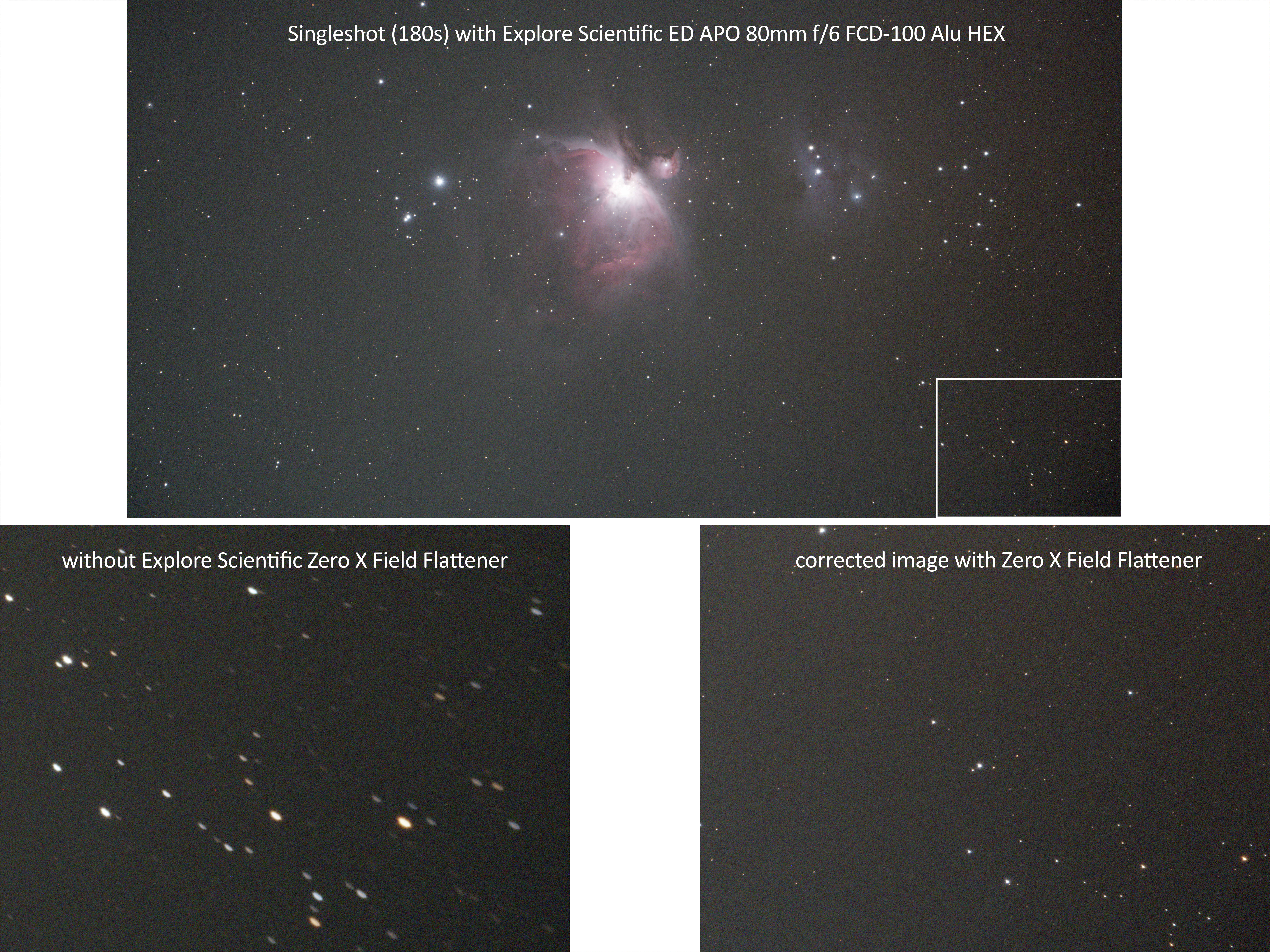
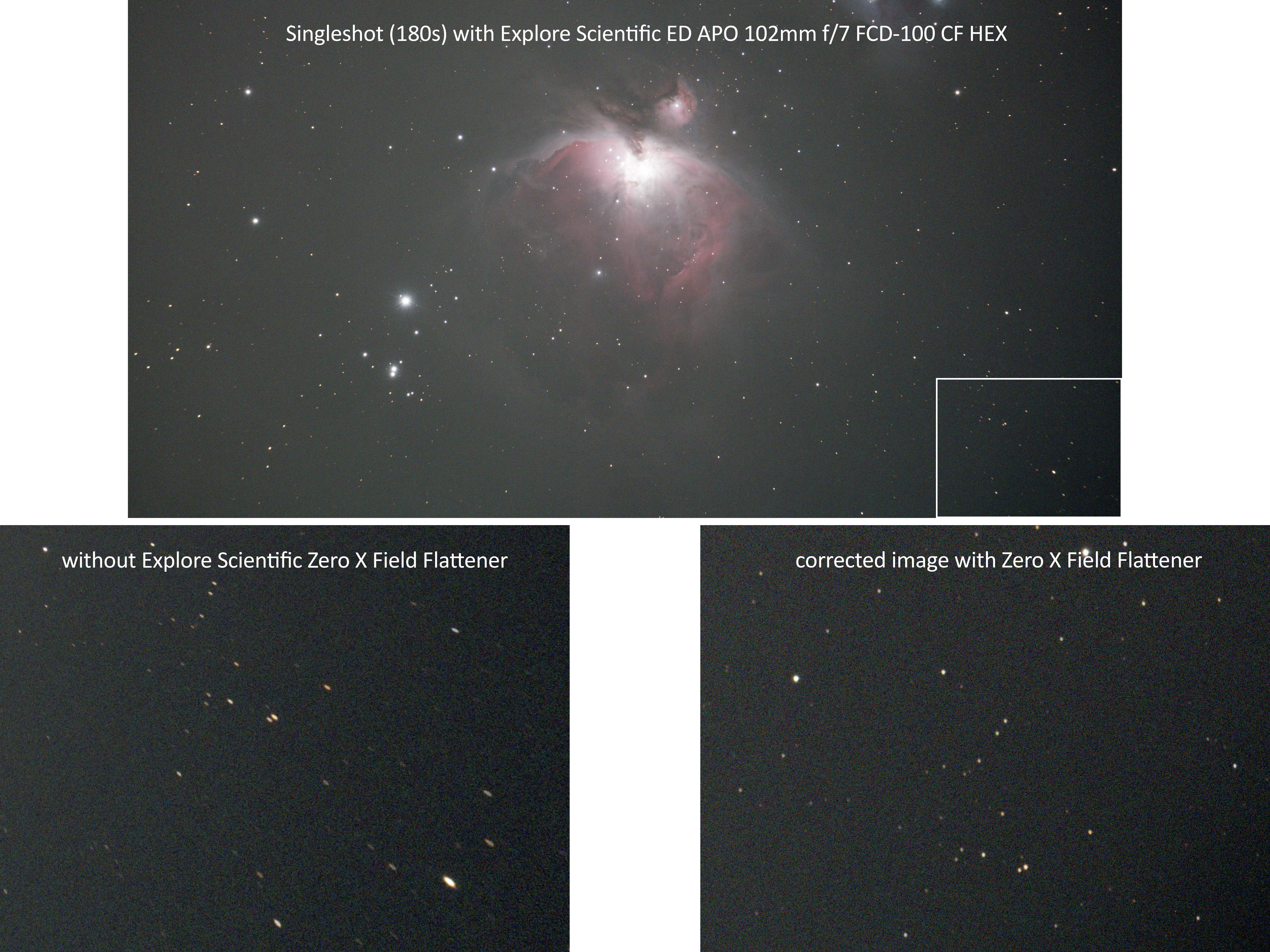
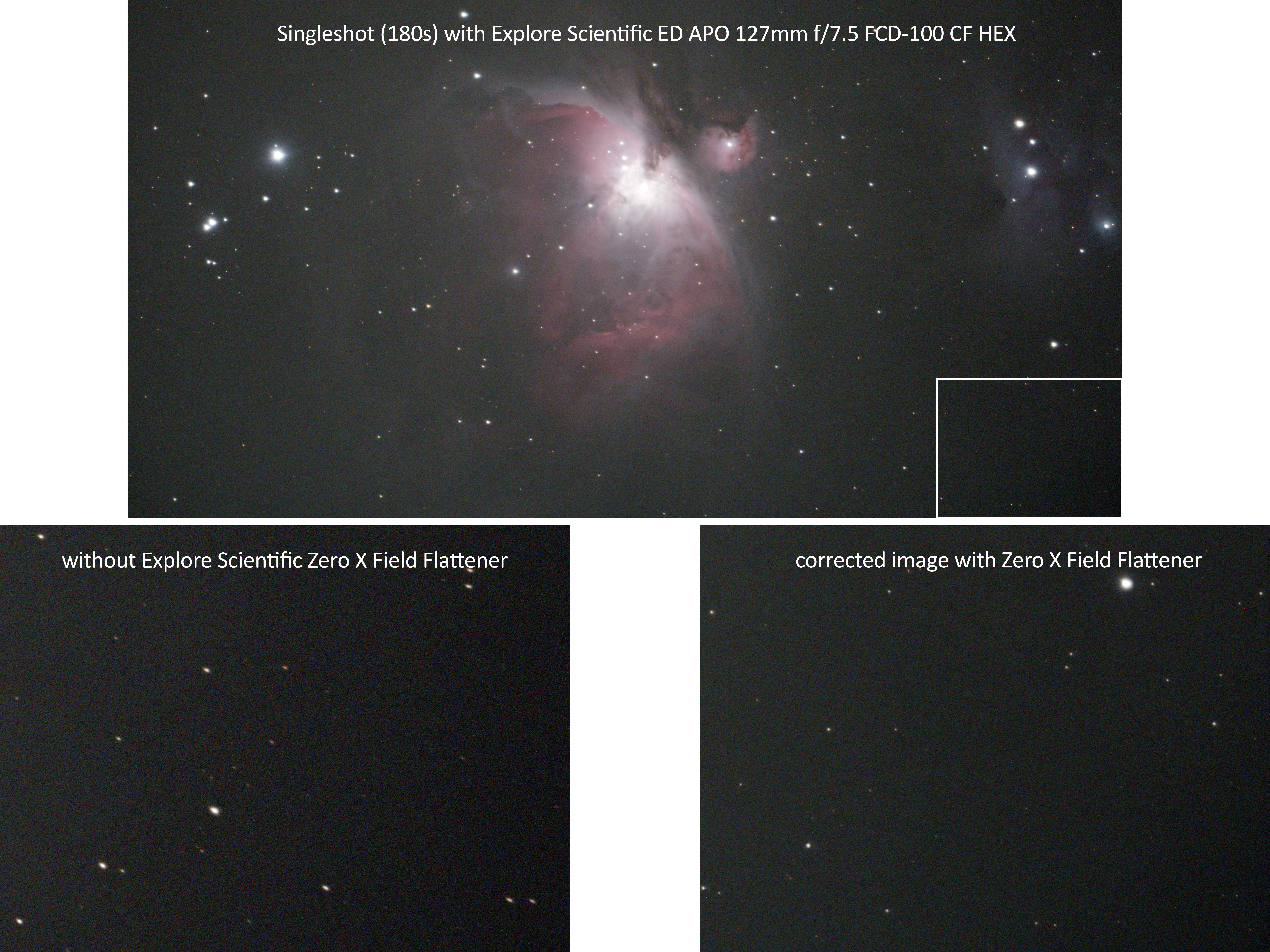
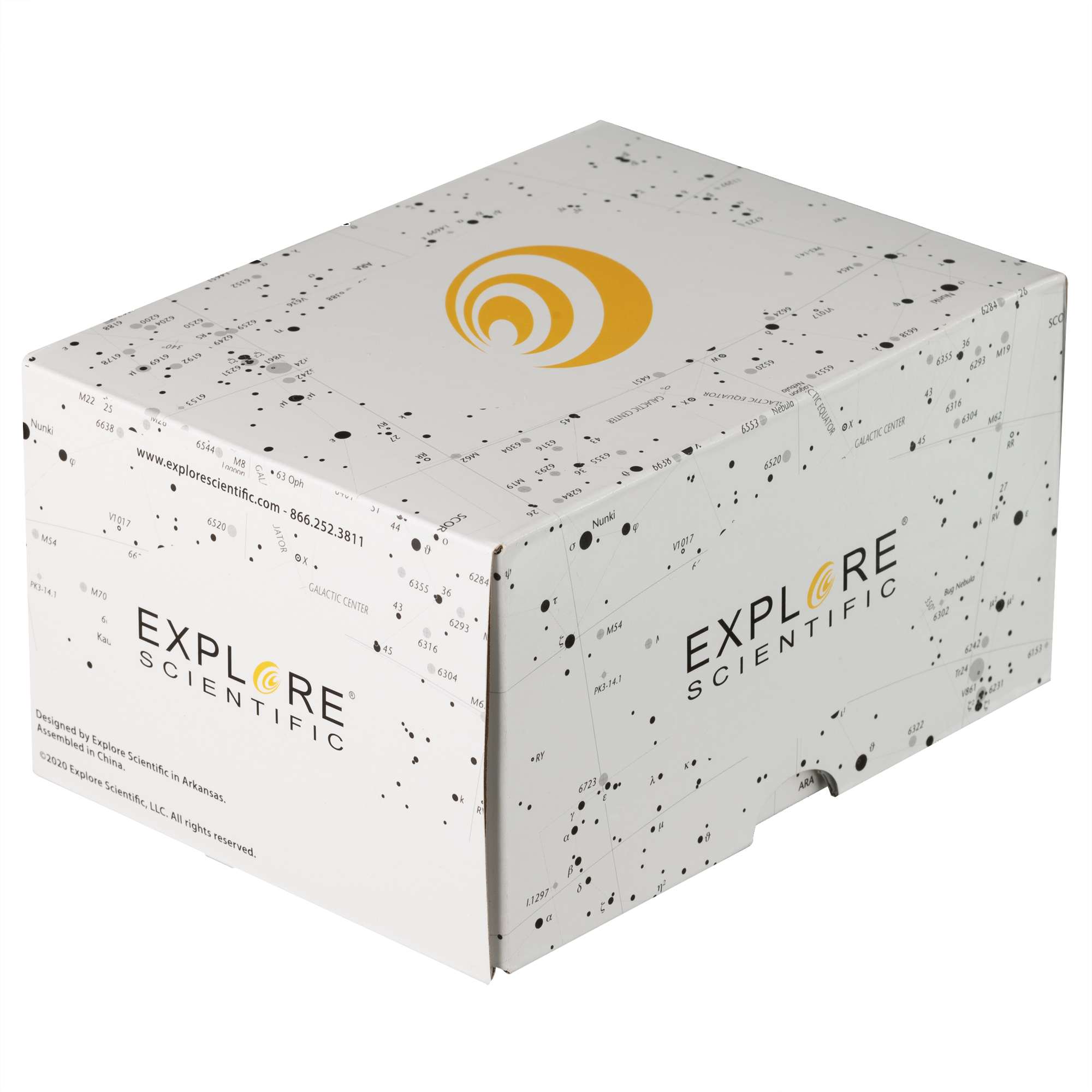



























Product Highlights
Field flattener for Explore Scientific ED80, ED102 and ED127 APOCHROMATS, correcting field curvature for up to full-frame camera sensors
- Flattener for Explore Scientific ED80, ED102 and ED127 APO telescopes
- Removes field curvature from telescopes
- Produces round stars even at the edge of the image field
- Correction for up to full-frame camera sensors (24x36 mm)
- Camera side with large M48 threaded connector
- Image field flattener without reduction factor
- Working distance of 55 mm between flattener and camera sensor
- For telescopes with a focal length of approx. 480 to 952 mm and focal ratios of F=6.0 and F=7.5
- Fully multi-coating on all lens surfaces
- Housing made of lightweight aluminium, black anodised
The imaging plane of many telescopes is not flat but curved. This means that only the area in the centre is perfectly focused - the edge becomes blurred. The human eye can usually compensate for this image property, but a camera shows increasing blurriness towards the edge of the image field. The Explore Scientific Zero X field flattener eliminates the field curvature in many telescopes with a focal length of approx. 480 to 952 mm. The Zero X field flattener was calculated and developed for Explore Scientific ED80, ED102 and ED127 apochromats with focal ratios of F=6.0 and F=7.5. The image sharpness at the edge is dramatically increased. The stars appear round and no longer distorted - a clear benefit for the whole image aesthetics. The Zero X image flattener can be used not only with Explore Scientific Apos, but also with many other Apos. This flattener does not change the focal length of the telescope.
Correction for up to full-frame camera sensors (24x36mm)
The Explore Scientific Zero X image flattener has been developed due to the rapid development of ever larger camera sensors. With it, there is finally a field flattener available that illuminates and corrects the field of view for full-frame camera sensors up to 24x36 mm.
How to use the Zero X field flattener with M48 thread connection
This field flattener has a 2 inch (50.8 mm) plug-in connection on the telescope side, with which it is inserted into the telescope instead of an eyepiece or star diagonal mirror. On the camera side, there is a standardised M48 x 0.75 mm connection thread. This M48 connection thread offers a larger free inner diameter than the usual T2 (M42) thread and prevents vignetting when using large camera sensors. With an optionally available and camera-specific adapter ring, a DSLR camera can be connected to it. The working distance is already set at 55 mm. Of course, mirrorless cameras or special astro cameras can also be used with the M48 thread connection. For this, the appropriate M48 spacer sleeves or adapters are additionally required to set the right working distance of 55 mm. This must always be done with every corrector or field flattener so that the best possible field flattening is achieved.
FEATURES
- Field flattener for Explore Scientific ED80, ED102 and ED127 APO telescopes
- Removes field curvature from telescopes
- Produces round stars even at the edge of the image field
- Image sharpness at the edge is drastically increased
- A clear benefit for the whole image aesthetics
- Correction of field curvature for up to full-frame camera sensors (24x36 mm)
- Image field flattener without reduction factor
- On the telescope side with 2 inch (50.8 mm) plug-in connection and M48x0.75mm filter thread
- Camera side with large M48 threaded connector
- Working distance of 55 mm between field flattener and camera sensor
- For telescopes with a focal length of approx. 480 to 952 mm
- Optimised for telescopes with focal ratios from F=6.0 to F=7.5
- Can also be used for various other APOs
- Fully multi-coating on all lens surfaces
- Housing made of lightweight aluminium, black anodised
- Aluminium dust cap for M48 thread
SCOPE OF DELIVERY
- Zero X field flattener (1 piece)
- Dust caps
| Colour: | black |
|---|---|
| Material: | Aluminium |
0 of 0 reviews
Login
Accessories
Similar products
Customers also viewed


